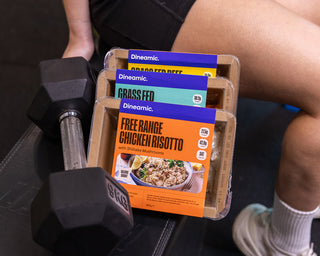Ever wonder why some days you’re full of energy and others you just can’t be bothered? It’s likely because of your fluctuating hormone levels. Every woman is different when it comes to her menstrual cycle, and understanding our individual bodies and their natural rhythms is such an amazing tool to make the most of changing hormone levels.
The median duration of a menstrual cycle is 28 days with most cycle lengths between 25 to 30 days. There are 2 main phases of your cycle; the Follicular phase (generally day 1 - 14) and the Luteal phase (generally day 5 - 28). Put simply, these phases are categorised by what our hormones are doing in our bodies during these times, which affects our moods, energy levels, behaviours and more.
The follicular phase is the first half of your cycle and starts on your first day of bleeding through to ovulation. Oestrogen (the primary female sex hormone) levels are low, but start to rise, follicle stimulating hormone (FSL) and luteinizing hormone (LH) rise and peak in the pre-ovulation phase(1).
Everyone experiences slightly different symptoms but it is likely you’ll experience an increase in energy, muscle strength and performance during this phase(2), as well as a quicker physical recovery time. The follicular phase is the perfect time to enjoy higher intensity exercises like running, boxing or to try a new higher intensity workout!
The luteal phase is the second half of your cycle and starts from the day of ovulation through to the day prior to your period. Oestrogen levels begin to rise, progesterone peaks and then in the pre-menstrual phase oestrogen and progesterone drop(1).
This is the not-so-fun phase where premenstrual symptoms (PMS) are common, occurring in 95% of women of reproductive age(3). These symptoms can include bloating, pains, irritability, decreased energy and aerobic capacity, and poor sleep(3). The luteal phase should be all about slowing down, taking it easy and listening to your body. This is the perfect time to enjoy lower intensity movement, such as yoga, stretching and walking, or just rest!
This is your friendly reminder to embrace more balance into your usual routine. Instead of pushing yourself to do a high intensity workout multiple times every week, honour your body and move in a way that feels best for you at the time.
Sophie Kane (@_allbeingwell_)
- Reed BG, Carr BR. The Normal Menstrual Cycle and the Control of Ovulation. [Updated 2018 Aug 5]. In: Feingold KR, Anawalt B, Boyce A, et al., editors. Endotext [Internet]. South Dartmouth (MA): MDText.com, Inc.; 2000-. Available from: https://www.ncbi.nlm.nih.gov/books/NBK279054/.
- Romero-Moraleda B, Coso JD, Gutiérrez-Hellín J, Ruiz-Moreno C, Grgic J, Lara B. The Influence of the Menstrual Cycle on Muscle Strength and Power Performance. J Hum Kinet. 2019 Aug 21;68:123-133. doi: 10.2478/hukin-2019-0061. PMID: 31531138; PMCID: PMC6724592.
- Kwan I, Onwude JL. Premenstrual syndrome. BMJ Clin Evid. 2015 Aug 25;2015:0806. PMID: 26303988; PMCID: PMC4548199.









